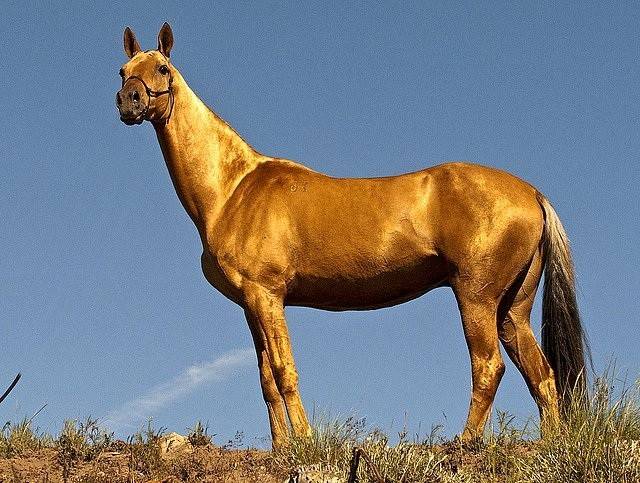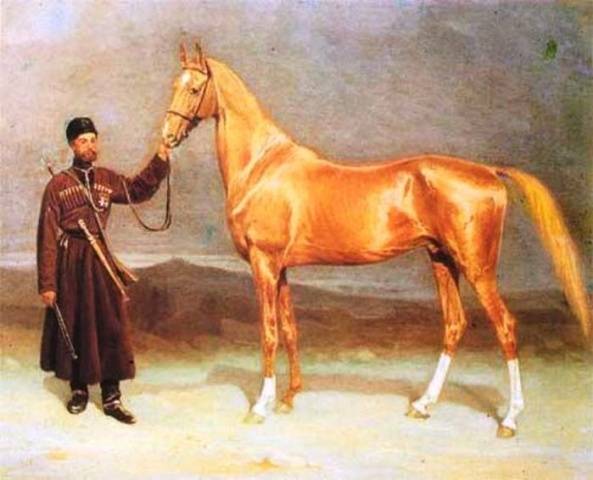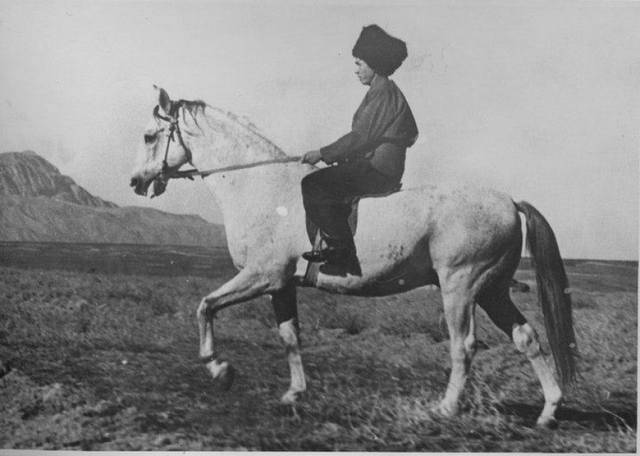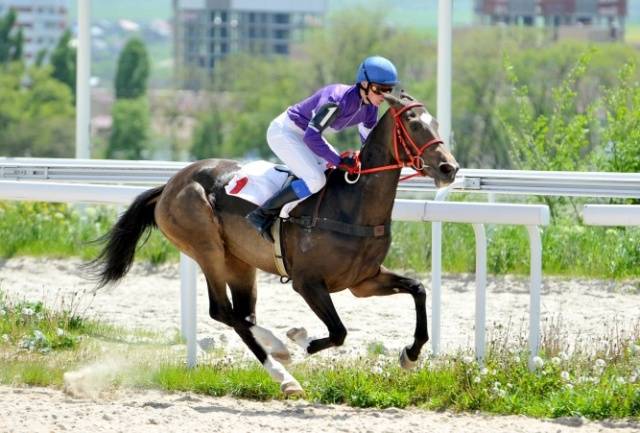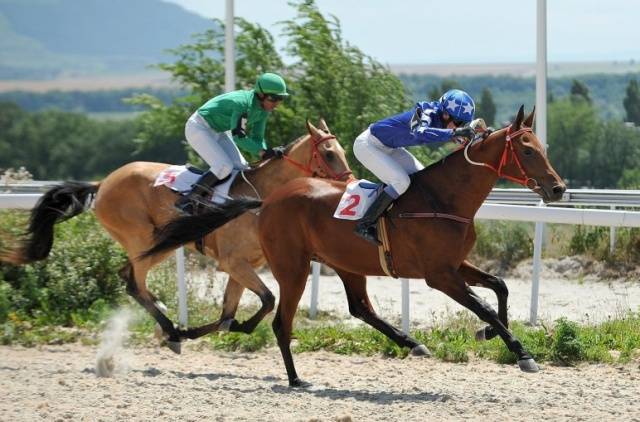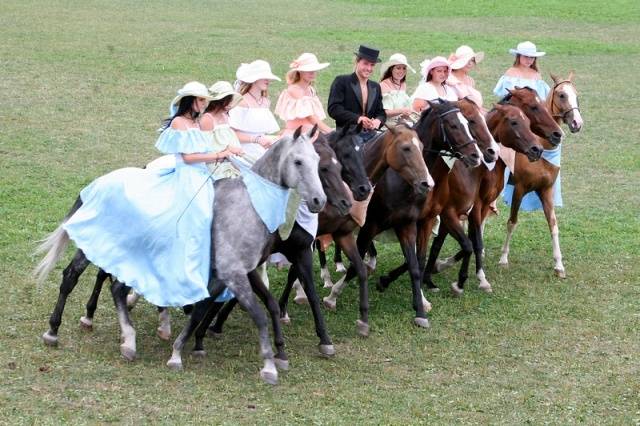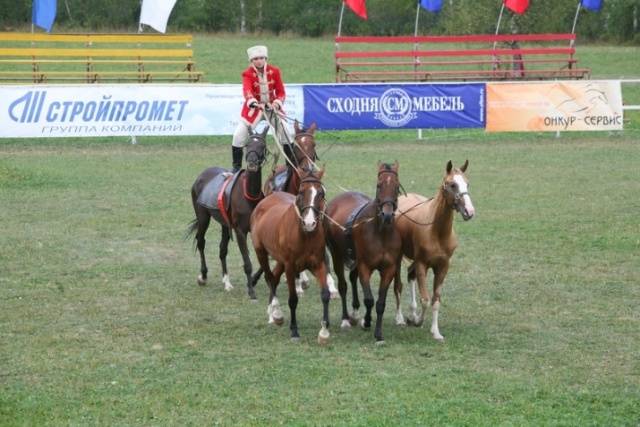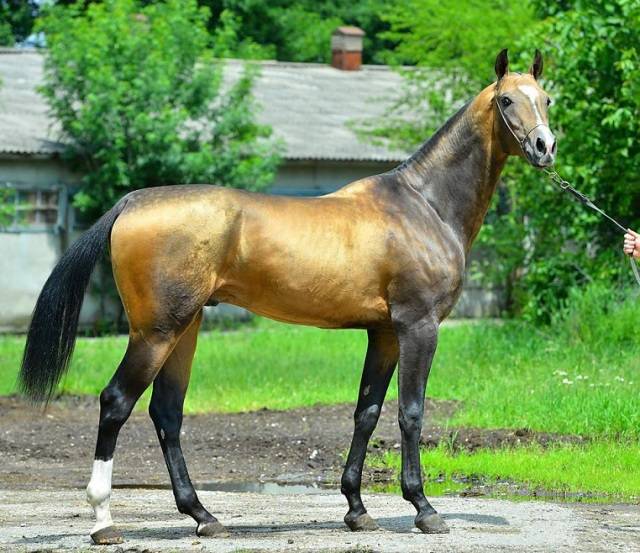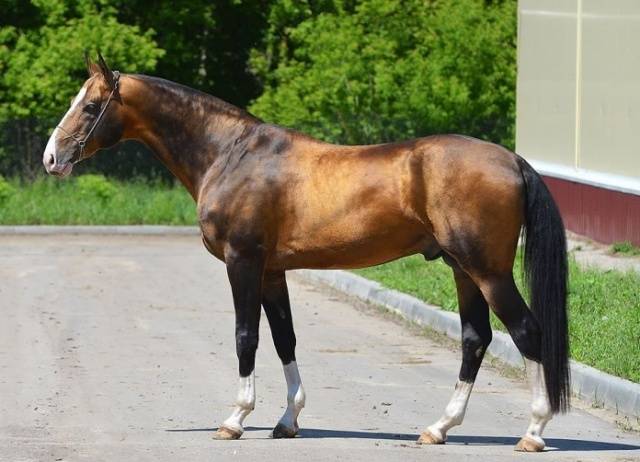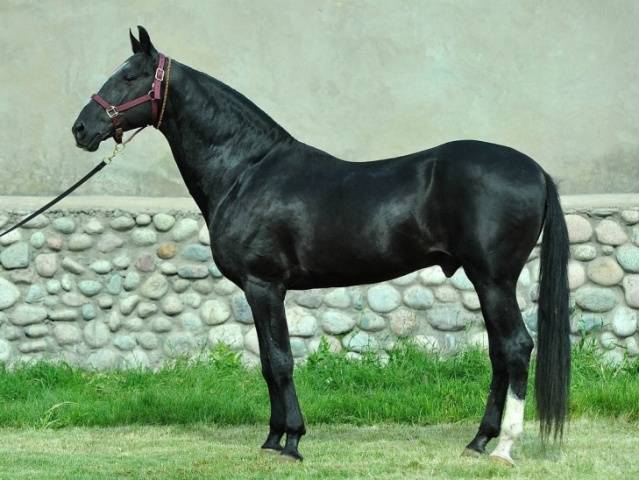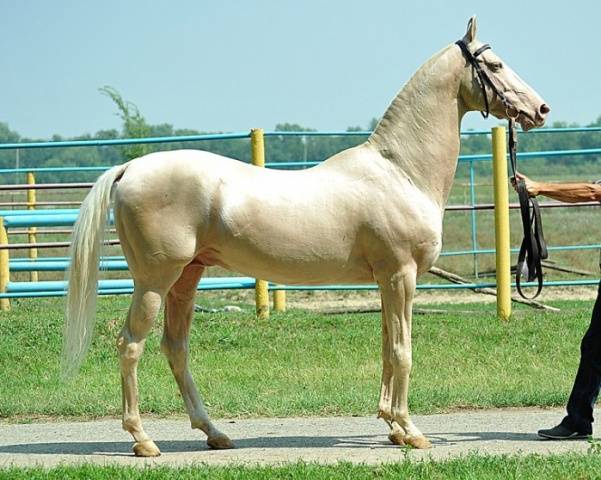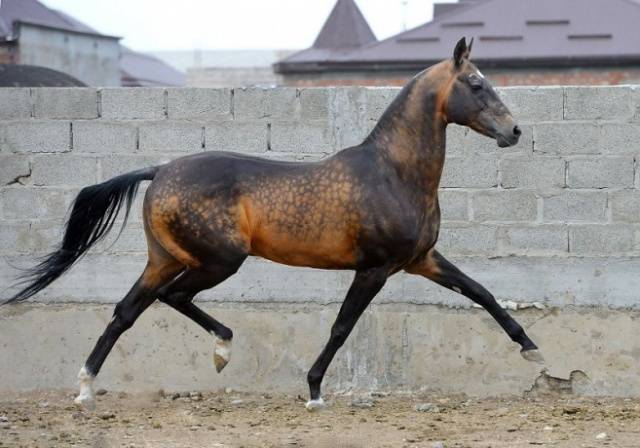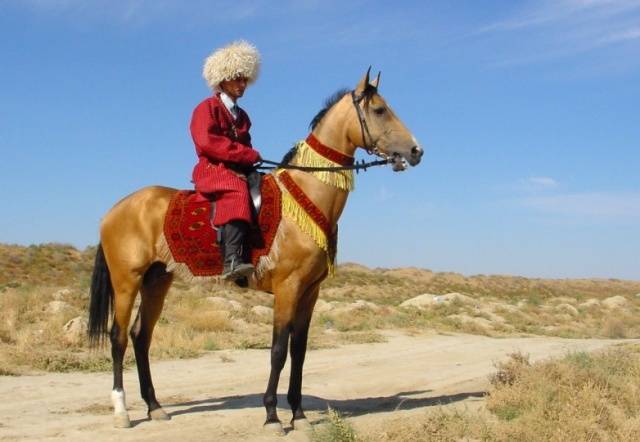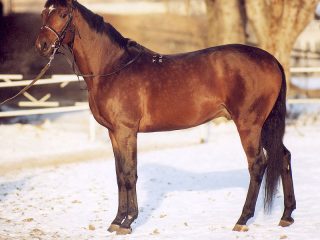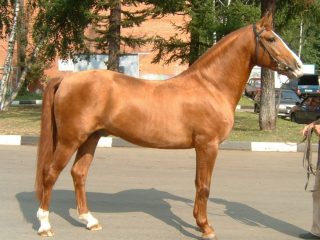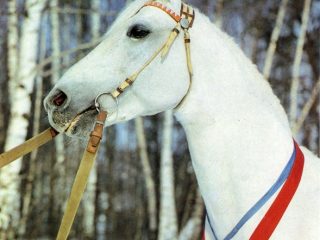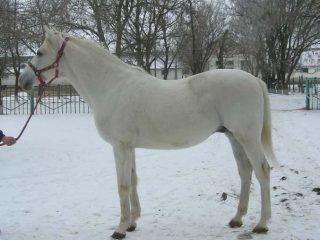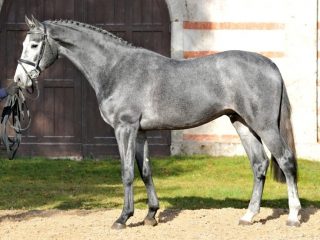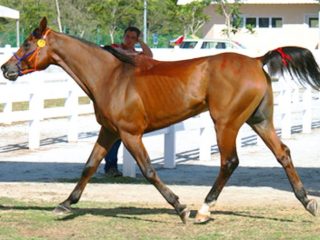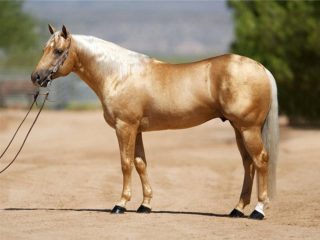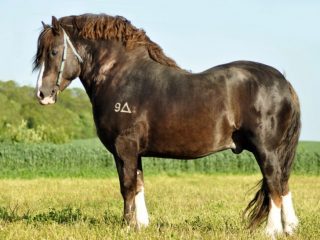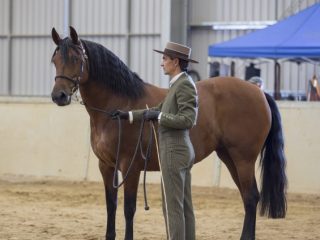Content
The Akhal-Teke horse is the only one horse breed, whose origin is covered in so many legends with a significant admixture of mysticism. Fans of this breed are looking for its roots in 2000 BC. Nothing that, according to historian-hippologist V.B. Kovalevskaya's domestication of the horse began only 7,000 years ago.
The Nisei horse of Parthia, mentioned in the chronicles of the times of Alexander the Great, is an Akhal-Teke breed, does its ancestor or the Nisei horse have anything to do with it at all? What if the ancestors of the Akhal-Teke are from Ancient Egypt? Indeed, on Egyptian frescoes, chariots are drawn by horses with a long body typical of modern Akhal-Teke horses.
But in such frescoes, dogs also have an unnaturally long body, which indicates the peculiarities of fine art in Egypt, and not the breed characteristics of the animals.
The territory of modern Turkmenistan was alternately occupied by Iranian-speaking and Turkic-speaking tribes. Then the Mongols galloped past. Trade and cultural ties were relatively well developed even at that time, so looking for images of the ancestors of Akhal-Teke horses on dishes, decorations and frescoes is a futile task.
Formation of the rock
According to the official version, the Akhal-Teke horse breed was bred by the Turkmen tribe in the Akhal-Teke oasis. Moreover, the tribe also bore the same name.In a good way, it is not even clear who gave the name to whom: the tribe of the oasis or the oasis of the tribe. In any case, the name “Ahal-Teke” is associated precisely with this tribe and oasis.
But the documented history of the Akhal-Teke horse, due to the complete lack of writing among the Turkmen tribes, begins only with the arrival of the Russian Empire in Turkmenistan. A strict division of the world's horse population into breeds and serious breeding work began to develop only in the 19th century. Previously, the “breed” was determined by the country of origin of the particular horse.
There is documentary evidence that in the stables of Ivan the Terrible there were oriental horses, which in those days were called argamaks. But this was the name given to all horses originally from the East. These horses could be:
- Kabardian;
- Karabair;
- Yomudic;
- Karabakh;
- Akhal-Teke;
- Arabic.
Being “overseas”, these horses were highly valued, but not all of them were Akhal-Teke horses. And it is possible that Ivan the Terrible did not have Akhal-Teke horses at all.
The horses bred in those places were gradually divided into draft horses (Ahal-Teke), which pulled chariots, and mountain pack horses (Arabian). The version is based on the fact that almost 4,000 years ago in that area, horses were actually trained in chariots, and the training scheme was similar to that used by horse trainers at a later time.
Selection for tribe
Until very recently, the horse was a means of transportation. A good horse, like a good modern car, was highly valued. And they also overpaid for the brand.But the main attention was paid to the fact that a good horse must withstand the demands placed on it. This was especially true for the horses of nomadic tribes, who constantly went on raids or made long journeys.
The task of the Akhal-Teke horse was to quickly take the owner to the intended point and take him away from there even faster if it turned out that the camp intended for plunder was able to resist. And often all this had to be done in almost waterless areas. Therefore, in addition to speed and distance endurance, the Akhal-Teke had to be able to get by with a minimum of water.
In order to find out whose stallion was the coolest, long-distance races were organized with prizes that were expensive at that time. The preparation for the race was brutal. At first, the horses were fattened on barley and alfalfa, and a few months before the races they began to be “dried.” The horses galloped for several tens of kilometers under 2-3 felts, until sweat began to pour from them in streams. Only after such preparation was the stallion considered ready to fight with rivals.
Of course, the foals were not ridden by adults, but by boys. Such harsh, from a modern point of view, treatment had a basis. This custom still exists in the Caspian basin. It's a matter of limited resources. It was necessary to select quality animals as early as possible and eliminate culling.
Only stallions that consistently won races were allowed to reproduce Akhal-Teke horses. The owner of such a stallion could consider himself rich; mating was expensive.But in those days it could have been a horse of any breed, as long as it won. Considering that during the Arab Caliphate, Iran and part of modern Turkmenistan were under the rule of the caliphs, both Arabian horse. Who influenced whom in those days is a moot point: the living conditions and the tasks facing the war horses were similar. Most likely, the influence was mutual. And among the Akhal-Teke horses there are many different types: from the “statue” familiar to visitors to horse shows to a fairly massive type; from a horse with a very long body to a short-body horse, similar in structure to an Arabian horse.
In old photographs it is not always possible to recognize horses of the Akhal-Teke breed, and even the ancestors of the lines existing today.
Over the course of 100 years, serious breeding work was carried out, which resulted in both the “porcelain figurine” above and a sports-type horse.
The fact that the origin of the Akhal-Teke horse breed is hidden by the veil of time, and the variety of types indicates that they were bred not only in the Akhal-Teke oasis, does not prevent anyone from admiring these horses today.
Myths and legends about the breed
One of the persistent cliches that scares horse lovers away from this breed is the myth about their viciousness and affection for their owner. There is a legend that Akhal-Teke horses were placed in a pit and the entire village threw stones at the horse. Only the owner took pity on the horse and gave him food and water. So they bred a breed of evil horses directly according to Lysenko’s theory.
In reality everything was much simpler.The “loyalty” of the Akhal-Teke horse was explained by the fact that from birth the foal had not seen anyone except its owner. The herd for the grown Akhal-Teke stallion was the owner's family. No self-respecting stallion will be delighted by the appearance of a member of someone else's herd in his field of vision and will try to drive him away. The result: a vicious beast.
And not a single evidence of the evil Akhal-Teke mare has survived. No wonder. The mares were sold. They took it for a while to get a foal from a famous stallion. In general, the mares were treated like ordinary horses.
Although, if raised in “stallion” conditions, the mare’s character would also not be sugar in relation to outsiders. And a horse of any other breed, raised in similar conditions, will behave in exactly the same way.
Since the times of the USSR, there have been clubs staffed by Teke horses near the hippodromes and factories that breed Akhal-Teke horses in Russia. Beginners are taught to ride them, the horses have new riders, and the reaction of the “unique evil monsters” is no different from the reaction of horses of more common sporting breeds.
The second myth: the Akhal-Teke horse is a psychotic beast, only dreaming of killing the rider during the race. This also has nothing to do with reality. The explanation is simple: Akhal-Teke horses still participate in racing trials, and in the USSR this was a mandatory procedure when selecting for the tribe.
A racehorse is trained to rest against the reins. The harder the jockey pulls on the reins, the more invested the horse is in it. To increase the length of a gallop, the jockey “pumps” the reins, releasing the pressure at the right moment.Trying to rest against the bit again, the horse involuntarily increases the extension of the front legs and the length of the captured space. The signal for the end of the race is the completely abandoned reins and relaxation of the jockey’s body. Thus, if you want to stop an Akhal-Teke horse that has passed hippodrome tests, drop the reins and relax.
A beginner, having mounted a horse, instinctively uses the reins as a handle for support.
The reaction of a galloping Akhal-Teke horse to a tight rein: “Do you want to gallop? Let's gallop!" The beginner, frightened, pulls the reins tighter. Horse: “Do you need to go faster? With pleasure!". Thoughts of a newcomer after the fall: “Those who said that these were rabid psychos were right.” But in fact, the horse honestly tried to do what the rider wanted from it. She's trained that way.
Sincere admirers of the Akhal-Teke breed and owners of the Argamak sports complex in St. Petersburg, Vladimir Solomonovich and Irina Vladimirovna Khienkin, tried to change this belief by speaking at horse shows in St. Petersburg and teaching young people how to ride and perform tricks on Akhal-Teke horses. Below are photos of Akhal-Teke horses from the Argamak Sports Complex.
These horses bear little resemblance to rabid, evil psychos who dream of killing a person. In fact, the Akhal-Teke is a breed of horse that does not stand out in any way in terms of character. In any breed there are “crocodiles” and good-natured, human-oriented horses. Every breed has phlegmatic and choleric people.
The video once again confirms that you can work with Tekins in the same way as with any other horses.
Breed standard
Standard horses have an easier time than other animals. The main thing is that the animal meets the requirements placed on it. There are usually several types and working lines within any horse breed. Often, if a horse shows good results, he will go into breeding, even if his legs are tied in a knot. Fortunately, a “bow-legged” horse cannot show high results.
The main features due to which the Akhal-Teke horse is recognizable in the photo:
- long body;
- long neck with high output;
- long, often straight croup.
These same structural features prevent it from successfully starting in equestrian sports. Height could also be a hindrance, since today athletes prefer tall horses. But her height was “corrected.” Previously, the standard was 150-155 cm at the withers. Today it is a culling, and the Akhal-Teke dogs have “grown” to 165-170 cm at the withers.
At the same time, the sporting type of Akhal-Teke can often be recognized only by breeding certificate. In the photo, the Akhal-Teke stallion Archman of the Uspensky stud farm is a possible future sire.
Photo of the most famous Akhal-Teke horse - Olympic champion Absinthe. The Germans still do not believe that Absinthe does not contain the blood of German horses. This is a massive Akhal-Teke with a very regular build.
For modern high-achievement sports, the Tekins have too many shortcomings in their build, although the Uspensky Plant is trying to eliminate them. Many Tekins are distinguished by the presence of a neck with an Adam's apple.
A high neck extension also creates great difficulties, since in dressage the neck and head have to be artificially lowered down.
And show jumping is hampered by a very long back and lower back.In a long horse, the vertebrae of the dorsal and lumbar regions are very easily damaged when jumping high.
Arabian horses have long occupied the leading positions in racing and the rules have already been written with this breed in mind. Akhal-Teke horses have endurance, but they cannot recover as quickly as Arabian horses.
And the role of a hobby horse for the Akhal-Teke was obscured by the myths about this breed that exist in people’s minds. But there is a much more serious obstacle to increasing the popularity of Akhal-Teke horses among the masses: the unreasonably high price “per skin”. Usually they ask for at least 2 times more money for an Akhal-Teke than for a horse of any other breed of the same quality. If the Akhal-Teke color is also beautiful, then the price can increase by an order of magnitude.
Suits
Looking through photos of Akhal-Teke horses, one cannot help but be amazed by the beauty of their colors. In addition to the main colors common to all representatives of the domesticated tarpan, the Akhal-Teke have very common colors, the appearance of which is determined by the presence of the Cremello gene in the genotype:
- dun;
- nightingale;
- isabella;
- ash-black.
The genetic basis of these suits are standard:
- black;
- bay;
- redhead.
Gray color is determined by the presence of the early graying gene. A horse of any color can turn grey, and it is often difficult to say on what basis the graying occurred.
Today the Isabella suit has become fashionable and there are more and more Tekins of this suit.
Stallions of this color began to be left in the production staff of factories. Although the Turkmen considered the Akhal-Teke horse of Isabella color to be vicious and removed it from breeding. From their point of view, they were right. Isabella horses have a minimum of pigment, which should protect them from the burning sun of Central Asia.
A horse of any other color has dark gray skin. It already prevents sunburn. Even a light gray horse has dark skin. This is noticeable in the snoring and groin areas.
Isabella has pink skin. It is devoid of pigment and cannot protect the horse from ultraviolet radiation.
In addition to the original colors, the Akhal-Teke wool has a special metallic sheen. It is formed due to the special structure of the hairs. The mechanism of inheritance of this brilliance has not yet been revealed.
It follows from this that, even if the Arabian horse had an influence on the Akhal-Teke horse, then there was definitely no reverse infusion of blood.
With a metallic sheen, golden-salt Akhal-Teke horses look especially beautiful. In this old photo, the Akhal-Teke horse is golden-salted in color.
Dun Akhal-Teke with zonal darkening.
And “just” a dun Teke in national dress.
Precocity
Remembering the legends that in the old days Akhal-Teke foals were ridden a year, today many are interested in how old Akhal-Teke horses grow. Maybe you can ride them within a year? Alas, the development of Akhal-Teke dogs is no different from the development of other breeds. They actively grow in height up to 4 years. Then growth in height slows down and the horses begin to “mat.” This breed reaches full development by 6-7 years.
Reviews
Conclusion
It is not known whether the Akhal-Teke will be able to withstand the modern demands of big sport, but he could already occupy the niche of a hobby-class horse for a rider who knows how to ride without any special sporting ambitions. In fact, the only thing that prevents this is the unreasonably high price.


